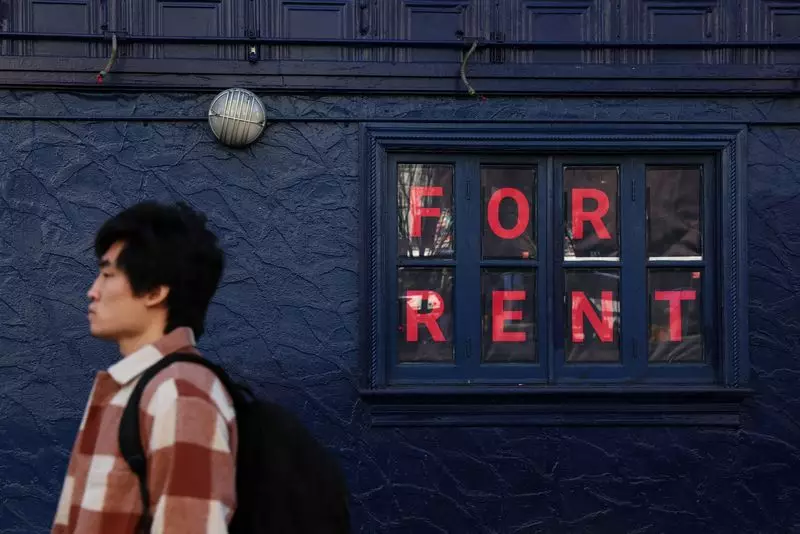The economic repercussions of inflated rent prices are becoming increasingly palpable, as highlighted by a recent report from the Federal Reserve Bank of Cleveland. It projected that rent inflation may linger, surpassing the pre-pandemic baseline of approximately 3.5% until mid-2026. This endurance of elevated rental costs poses significant challenges for the Federal Reserve’s ongoing mission to return overall inflation to a target of 2%. The implications are substantial for consumers, whose financial stability is increasingly tethered to the rise in housing costs.
The Divergence of New and Existing Rents
At the crux of the rent inflation issue is a pronounced disparity between new rents and those governed by existing leases. The analysis indicates that fresh rental agreements are substantially outpacing those in place, creating a gap that has widened significantly compared to pre-pandemic levels. Where this divergence once hovered around 1%, forecasts for September 2024 estimate it will reach roughly 5.5%. This considerable gap suggests that existing tenants will still face potential for heightened rent increases as current agreements eventually reflect the surging new rental rates. Thus, while some renters may feel shielded in their current contracts, the looming pressure to adjust to market realities is ever-present.
The term “sticky” aptly describes the nature of current rent inflation, which is proving resistant to the Federal Reserve’s broader strategies to stabilize inflation post-pandemic. The expectation was that as the economy recuperated, inflation pressures would dissipate, yet rent prices remain anchored firmly above desirable levels. Fed officials are optimistic, affirming that while overall inflation metrics are on a downturn, the ongoing struggle with rent prices complicates a clean recovery. The disconnect between short-term optimism and long-term realities embodies a dilemma for monetary policy makers: how to rein in inflation without stifling economic growth.
Yet, there are glimmers of hope. Analysis by Omair Sharif from Inflation Insights offers a perspective that annualized rent growth has decelerated to 4.6% as of September, down from a staggering 6.8% in 2023. This moderation signals potential easing within the housing sector, which could gradually convert into softer overall price indexes. The trajectory of rent prices carries significant weight, influencing the Federal Reserve’s strategic decisions regarding interest rates and monetary policy normalization.
Federal Reserve leaders retain a cautiously optimistic outlook. Alberto Musalem, the St. Louis Fed chief, predicted a convergence toward the 2% inflation target in the forthcoming quarters, attributing this expectation to dwindling shelter prices. He, along with fellow Fed officials, posited that as new rental price increases falter—reflecting broader economic trends like a cooling job market—the associated pressures on renewal agreements would also lessen.
The Role of Labor Market Conditions
Connected to the narrative of rent inflation is the state of the labor market, which, according to Boston Fed chief Susan Collins, plays a crucial role in shaping shelter prices. A more tempered job market, characterized by slower growth in wage demands, may fortify the trend of moderated new rental prices. As the economy stabilizes and pressures ease, one can expect that the resulting impact will also affect rent adjustments in existing leases, allowing many consumers to breathe easier financially.
While pertinent measures are being undertaken to curb inflation, rent inflation remains a sticking point for both the economy and individuals. It symbolizes broader challenges stemming from post-pandemic recovery and directly affects affordability for consumers. Policymakers must navigate these complexities, mindful that the interplay between economic indicators and consumer sentiment will be pivotal in the quest for financial stability. The continued monitoring of rent trends is essential, as it will provide crucial insights to steer the future course of economic recovery and inflation management.


Leave a Reply